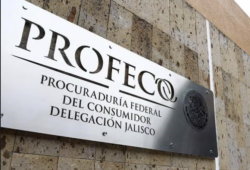 With stores dropping prices to historically low levels for just one day, all the holiday deals give the idea that every bargain is worthwhile, making it seem necessary to step over other customers to get to it.
With stores dropping prices to historically low levels for just one day, all the holiday deals give the idea that every bargain is worthwhile, making it seem necessary to step over other customers to get to it.
Research by Which found that six months following the sales, 98% of the discounts publicized the year before—including specials on well-liked tech, home, and personal care products—were still valid.
Additionally, 85% of the goods on offer had been the same price or less expensive six months before Black Friday.
Only three (1%) out of the 119 products analyzed were at their absolute lowest price on Black Friday.
Avoid falling into shady deals this holiday season by checking out these pointers before following your next urge to buy a tablet or coffee maker. Here are tips to ensure that that ‘special offer’ you landed is legitimate:
Four tips to help you determine if those holiday deals are real
Verify the item’s price on other websites
This is the simplest check you can make. However, data shows that 13% of Black Friday consumers in 2017 neglected this step.
Most times, more than one store will offer a product at a comparable price, but only one will state that the price is a special deal.
For instance, it indicates that the price is not a particularly unique deal if four shops offer an identical washing machine for $250, but only one is stating it’s a special offer at “Now $250, was $300.”
Of course, if you don’t mind spending $250 on that specific washing machine, go ahead. However, resist the urge to buy it, thinking you’re getting a deal.
Review past prices
Make a short list of items you want to track during the Black Friday bargains, and then check their pricing histories on websites like CheapShark, Pricerunner, Slickdeals, and CamelCamelCamel (only for Amazon).
This will allow you to determine whether the Black Friday deals are indeed exciting as they sound.
Watch out for holiday “was” prices
On Black Friday, claims like “was $100, now $50” are common. But don’t be fooled by this “anchor pricing.”
Retailers advertise discounts loudly—often in red to draw attention—and may be highly deceptive in their attempts to sway shoppers.
Numerous products across major retailers feature at their reduced price for longer than at their full “was” price.
Additionally, retailers use previously recommended retail prices as “was” prices, which reflect the product’s value at the time of its initial release rather than its current value.
Additionally, since Amazon displays every price reduction as though it were a campaign, it advertises even a 1p price reduction as a deal.
It is better to compare prices with those of other stores rather than blindly relying on anchor prices to determine the genuine worth of the item you purchase.
4. Watch out for notes describing the holiday deals
Special offer regulations are ambiguous. In some cases, stores can get away with utilizing “was” prices that haven’t been in effect for a long time. These kinds of strategies can make offers seem better than they actually are.
The product may only be offered at the higher price for a fortnight, or six months, before the present promotion.
If you want to be sure you’re receiving the greatest bargain, it’s worth conducting some careful research. Sometimes these points are clearly labeled, but other times they’re entirely hidden. That could mean wading through mountains of fine print to unearth ambiguous terminology.
RRPs (recommended retail prices) are not a requirement for all manufacturers, but some have them and prefer to show them on their own websites. Check the manufacturer’s website to determine if you’re getting a good deal on the RRP before you purchase a product in the sales.











